The multi-day trek from the city of Cusco to the ruins of Machu Picchu along the Inca Trail is definitely Peru’s top adventure tourism attraction. But beyond the well-trodden trails of the Sacred Valley, Peru has plenty to offer adventure travelers. Whether it be sandboarding or downhill volcano biking, you’re bound to get your adrenaline fix on a trip to one of these adventure travel destinations.
Huacachina
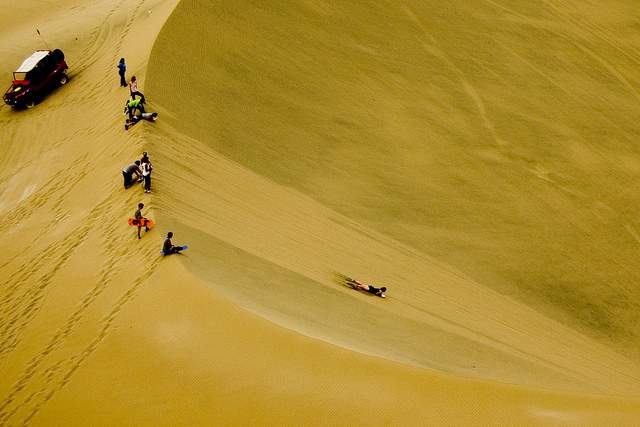
Peru may be entirely devoid of ski resorts, but boarders can satisfy their itch to conquer downhill slopes by visiting the giant sand dunes of Huacachina, Peru. This desert oasis is located just outside the city of Ica on Peru’s southern coastline and is a beloved stop for backpackers en route from Lima to Arequipa. Skilled boarders can go down on their feet, while those with less experience can sled down the dunes on their stomachs instead.
Getting there and around
Located just off Peru’s coastal Pan-American Highway, Huacachina is an easy excursion from Lima. There are no commercial airports, so the best way to go is by bus to Ica (four hours) and then take a cab for the short ten to fifteen-minute ride into Huacachina.
Bus lines Cruz del Sur, Oltursa, and Ormeño are all popular companies that service this route, with fares averaging about $15-$20USD each way on the second level. The taxi from Ica city center to Huacachina should cost no more than $4USD; make sure to negotiate the price with the cab driver before getting in, as taxis in Peru do not have running meters.
Once you arrive, it’s possible to tour the dunes independently—if you want to lug your board behind you as you climb each hill, that is. A much more convenient option is to arrange a tour through your hotel or hostel upon arrival. For about $20-$25USD, you’ll be given a two-hour tour, which includes a free board rental and a dizzying high-speed buggy ride around the dunes.
[social]
Where to stay
Casa de Arena is widely known as Huacachina’s premiere party hostel, featuring a large pool, poolside bar, and a discothèque (entrance is free to the club if you are a hostel guest). A room with two twin beds and a private bath will cost you about $20USD a night.
Find other hostels in Huacachina and read about Sand Surfing in Peru
Arequipa
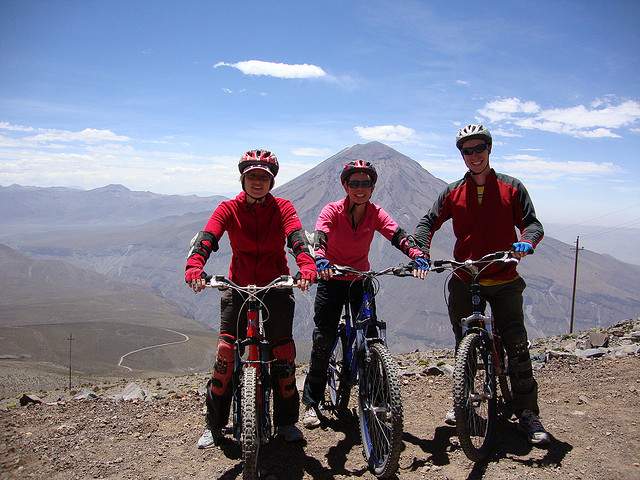
Peru’s second most populous city—located in the far south of the country—is a mecca for adventure tourism. The city is nestled in the Peruvian Andes and surrounded by the snowcapped volcanoes of El Misti and Chachani. It’s also the jumping off point for treks through Colca Canyon, ranked the world’s second deepest canyon after its neighboring Cotahausi Canyon. Adventure travel activities include trekking, downhill biking, mountain biking, and rock climbing.
Getting there and around
Arequipa is a short hour and a half plane ride from Lima, and fares are reasonable if you travel with Peruvian Airlines (starting at $100USD round-trip) or TACA (starting at $145 round-trip). The cheaper option is to head south on the Pan-American highway from Lima to Arequipa on the bus. Be aware that the trip takes about sixteen hours on Cruz del Sur or Oltursa and includes several stops along the way. Cruz del Sur offers a sleeper bus for about $56USD each way, or you can book a regular seat on the second level of either bus line for about $35-$40USD each way. It’s not necessary to book your tours before you arrive in Arequipa; there are plenty of tourism companies scattered around the main Plaza de Armas.
Where to stay
There are numerous hostels located close to the main plaza in Arequipa. The big party hostel in Arequipa is Wild Rover, which includes a pool, terrace, and a cocktail bar; a place in a standard four-bed room costs about $8USD a night. If you want a more relaxed environment, try the Amazing Hostel Arequipa for about $10-12USD a night.
Check out other hostels in Arequipa.
Colca Canyon treks and lodging
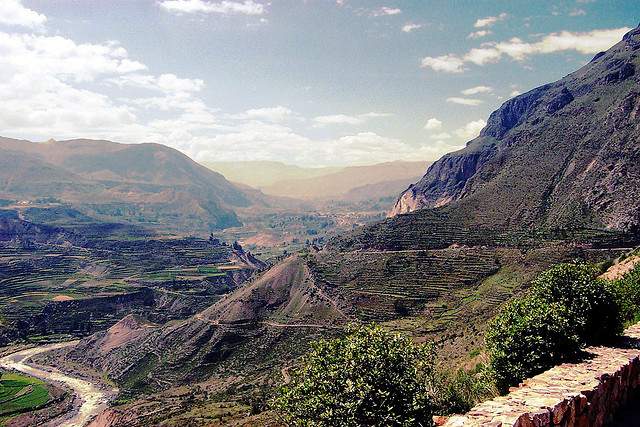
Colca Canyon treks deserve some special consideration, as the canyon itself is a four-hour drive from the city of Arequipa. You basically have two options to do the trek: as an organized tour or independent travel. The main advantage of an organized tour is convenience: most guides will include your transportation to and from Arequipa, your overnight stay(s), meals, and entrance ticket in the cost of the tour. Local bilingual guide Arturo Carlos Muñoa Guillen is recommended if you take this route. He charges $95 for an all-inclusive two-day trek and $115 for a three-day trek.
That said, planning the trek on your own is relatively easy. Daily bus departures leave from the Terminal Terrestre in Arequipa on Transportes Analucia, Transportes Reyna, and Señor de Milagros for about $6USD one way. Your final destination will be Cabanaconde, roughly a six-hour ride by bus. Plan to stay the night at a hostel in Cabanaconde (from $6USD at Pachamama Backpacker Hostel) and start your hike the following morning. If you opt for this route, you’ll probably want to stay overnight at two spots inside the canyon, the village of San Juan de Chuccho and Sangalle el Oasis. You can arrange accommodation in both places with a home cooked dinner and breakfast for about $9-10USD a night. You’ll also need to factor the cost of the tourist ticket ($27USD) into your budget if you’re traveling independently.
Check out our Flight of the Condor adventure trip to Peru.
Lunahuaná
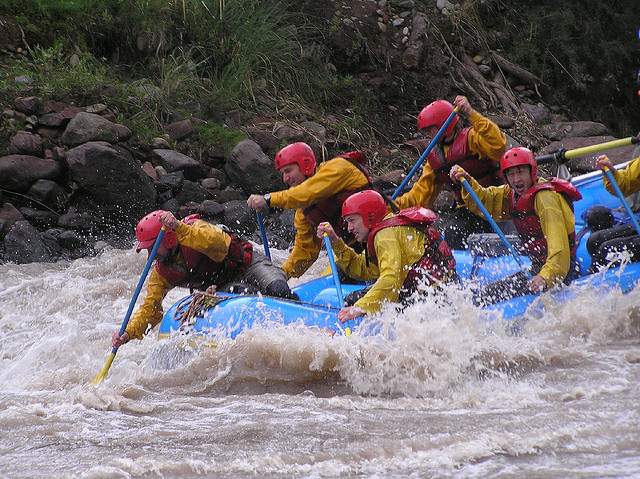
The two best features of the Lunahuaná Valley are its dramatic mountain landscapes and white water rapids. City slicker Limeños escape there on long weekends to raft down the Río Cañete, ride horseback or quads, or go mountain biking through the countryside. While it’s a popular destination for local travelers, the Lunahuaná Valley is virtually unknown to foreign tourists.
Getting there and around
There’s no direct route to Lunahuaná from Lima by bus, but you can get there on your own with a little maneuvering. The popular domestic bus companies Flores and PeruBus/Soyuz will take you as far as the town of Cañete (two and a half hours) for less than $10USD. From there, you can catch the local colectivo to Imperial (15 minutes) for about $0.50USD, and a final colectivo from Imperial to Lunahuaná for $1.00USD. You can book your activities at your hotel or local agencies in town upon your arrival. If you prefer an organized tour, JFC Tours is a local operator that will take you from Lima and Lunahuaná and back in one day with the option of rafting and quads ($82USD) or canopy ($100USD).
Where to stay
Independent travelers will probably want to spend the night in Lunahuaná. If you’re willing to haul your own tent, there are several campsites in the area, including Camping El Guanabo, Camping Juan Paulino, and Camping El Molino. Hostel accommodation at Las Casuarinas, La Entrada, or El Mirador starts at $12USD a night.
Chachapoyas
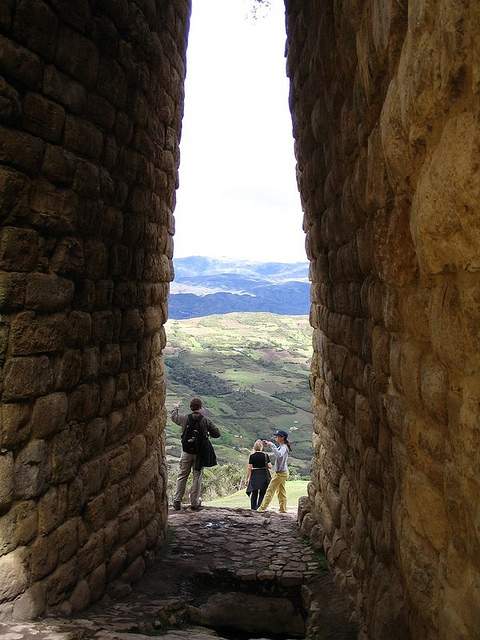
Located in the northern Amazonas region of Peru, Chachapoyas has yet to hit big on the tourism radar. But its proximity to a number of fascinating attractions—the pre-Inca fortress of Kuelap, the anthropomorphic Karajia Tombs, Gocta Waterfall, and Quiocta Cave—make it a great choice for trekkers and culture enthusiasts looking to trod off the beaten path.
Getting there and around
There’s no easy route to Chachapoyas, and getting around once you’re there can be a challenge. The cheapest option is to cobble together your own route to Chachapoyas and have a tour waiting for you upon arrival. The most popular route from Lima is to travel first to Chiclayo by plane (TACA Airlines, 1.5 hours, $125USD round trip) or bus (Cruz del Sur, TEPSA, 12 hours, $25-$35USD one way.) From Chiclayo, you’ll need to take an overnight bus for the 11-hour journey to Chachapoyas. Several local bus operators run this route for about $15-$20USD one way; among them are Movil Tours, Trans Servis Kuelap, and Expreso S.A.C.
Where to stay
If your tour does not include lodging, you’ll need to book accommodations in Chachapoyas to serve as your hub. Chachapoyas Backpackers and Hostal Amazonas are located in the heart of Chachapoyas, with rooms starting at $15USD a night. The staff at both hotels is friendly and can help you arrange your tours upon arrival.
Read more about the Chachapoyan Ruins.
Cabo Blanco
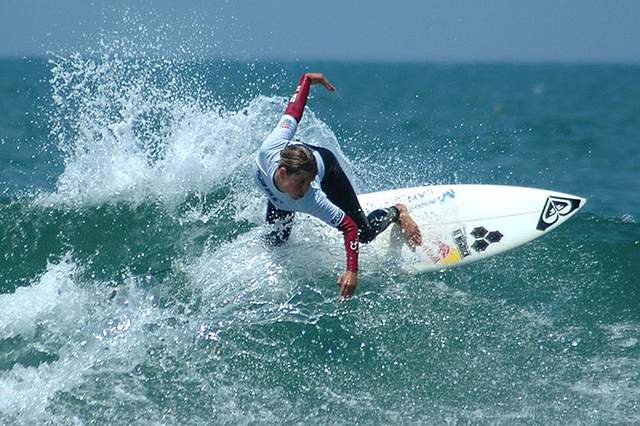
Made famous by high profile visits from Ernest Hemingway and Nelson Rockefeller, Cabo Blanco is known for two things: giant marlin fish and perfect tubular waves. The small fishing town makes a quiet refuge for surfers who want to get away from the packed tourist beaches of Máncora, about a 30-minute ride north. Surfing is best left to experts: the left reef break can reach 10 feet in the months from October through January, earning it the distinction of the best wave in Peru.
Getting there and around
Because lodging options are limited in Cabo Blanco (see below), the beach towns of Máncora or Los Órganos will likely serve as your hub for travel to and from Cabo Blanco. The long journey to these beach towns from Lima takes approximately 16 hours by bus; the popular companies Cruz del Sur, Oltursa, TEPSA, Cial, and Civa all service this route with prices starting around $36-$40 one way for second tier seats. From there, you can take a local colectivo or truck to El Alto and on to Cabo Blanco. Another alternative is to fly from Lima to Piura (1.5 hours, Peruvian Airlines or TACA, about $150USD) and then catch the EPPO bus for the three-hour ride from Piura to El Alto ($4-5USD).
Where to stay
The only hotel in Cabo Blanco is El Merlin; prices start around $28USD for a simple room. You’ll most likely want to catch the waves in Cabo Blanco during the day and plan to head north in the evenings. Kokopelli, The Point, and Loki are all popular hostels in Máncora, with shared accommodation starting around $10USD a night.
If you are planning a trip to Peru, check out the following articles and resources to make your trip planning easier:
- Read our Lima Indie Travel Guide
- Find a flight to Peru
- Check out hostels in Peru
- Book an adventure trip in Peru
- Read Trek Around the World
- Read Adventures in the Dark: Nighttime Activities Around the World
- Read How to Plan an Extended Trip in South America
Photos by: robertluna3, Liam and Hels, CmdrGravy, Rupert Taylor-Price, Xtremizta, Incacity.
